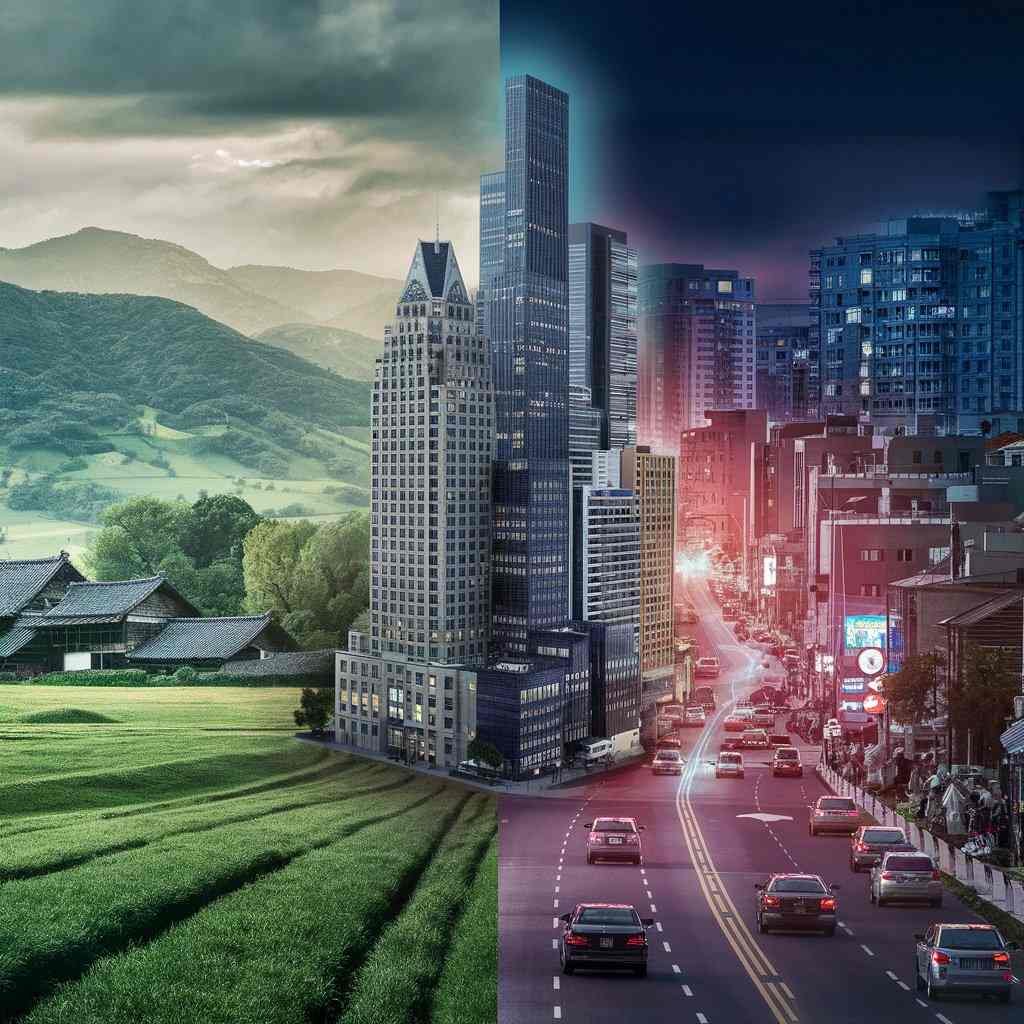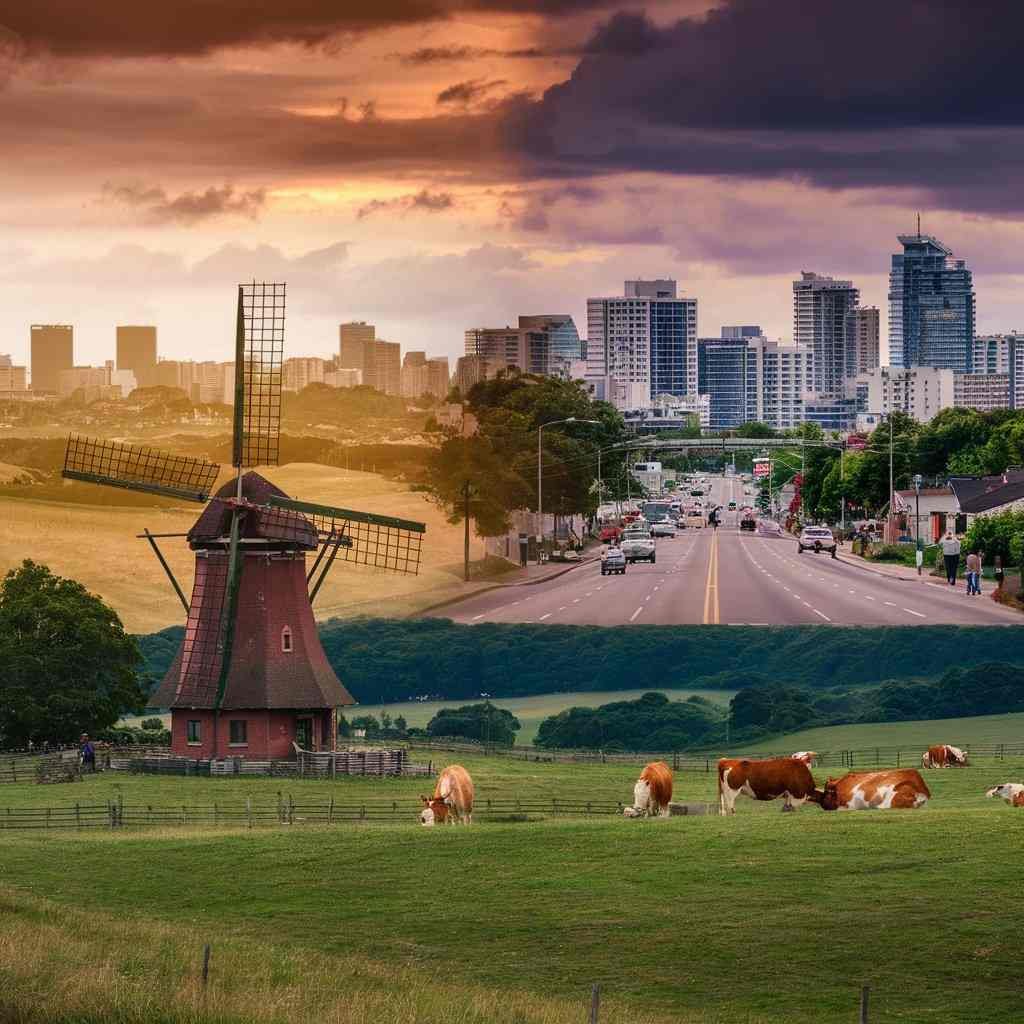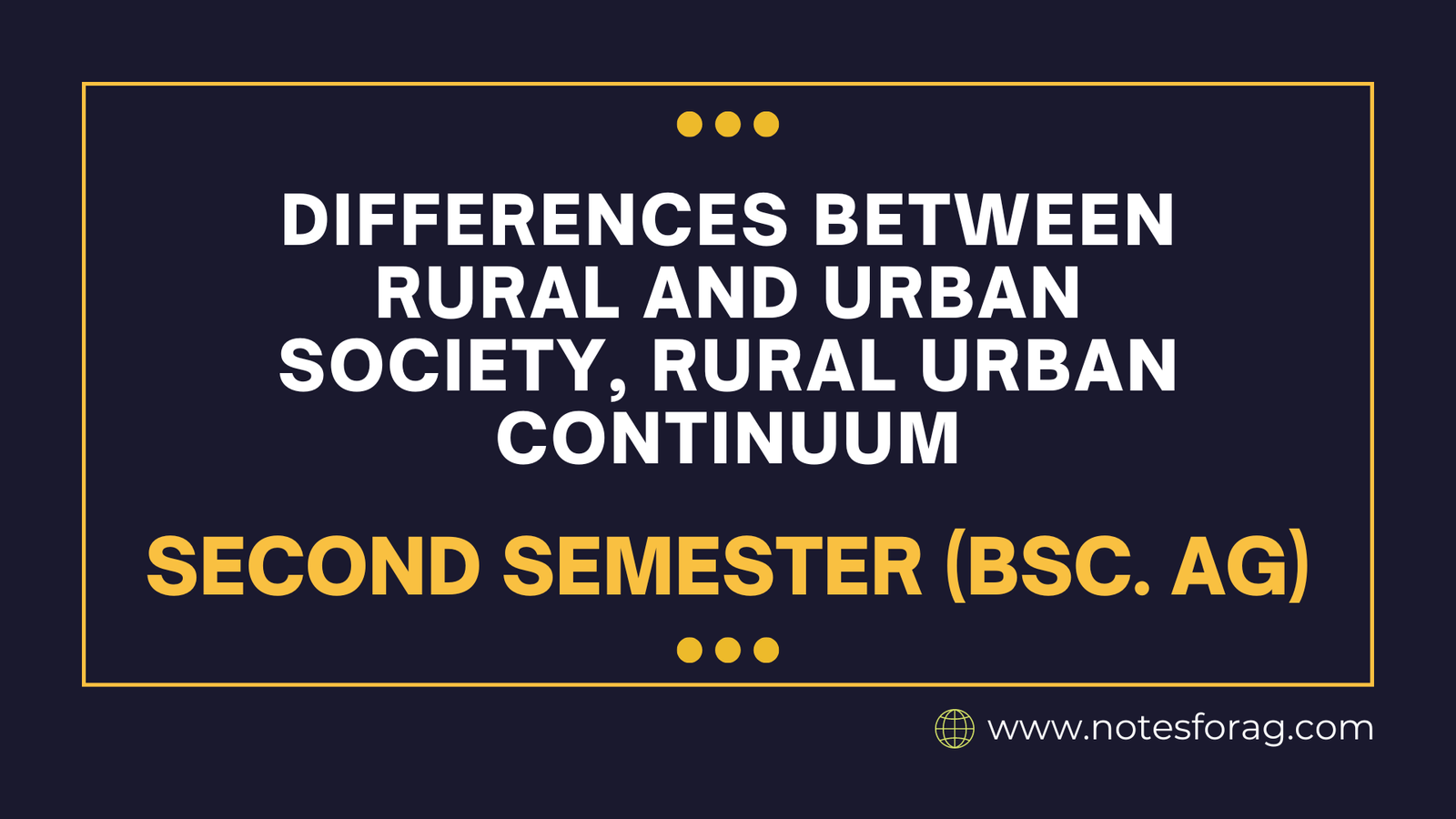The population density, economic activity, social structures, and cultural norms of rural and urban society are very different from one another. Tight-knit communities with traditional lifestyles are common in rural areas, which are defined by lower population density and a strong reliance on agriculture and primary industries. As opposed to this, urban areas have a faster pace of life, more sophisticated infrastructure, and a wider variety of cultural opportunities due to their higher population density and manufacturing and service-oriented economic opportunities. By stressing a gradual transition and interconnectedness between rural and urban regions, the rural-urban continuum concept highlights that these divisions are not absolute.
Table of Contents
Differences between rural and urban society

The differences between rural and urban society can be understood through various dimensions including demographic, economic, social, and cultural aspects. Additionally, the concept of the rural-urban continuum highlights that the distinction between rural and urban society is not always clear-cut but rather exists on a spectrum.
The differences between rural and urban society are presented below:
| S.N | Rural Society | S.N | Urban Society |
| 1) | In a rural society, people live widely apart and there is typically little population density. | 1) | Urban society is defined by dense populations that live close to one another in towns and cities. |
| 2) | Agriculture, forestry, fishing, and mining are the main economic sectors in rural societies. Management of natural resources, agriculture, and livestock are common industries for jobs. | 2) | The urban society has a more diversified economy, encompassing sectors like healthcare, education, finance, manufacturing, and information technology. A wide range of specialized skills are frequently required for jobs. |
| 3) | Rural societies may have less developed infrastructure and have less access to communication, transportation, healthcare, and educational resources. Basic facilities may be dispersed and harder to get to. | 3) | Urban society is characterized by a highly developed infrastructure, which includes vast networks of roads, trains, and airports for transportation, as well as sophisticated medical facilities, a large number of educational institutions, and robust communication systems. |
| 4) | Rural societies typically have tight-knit neighborhoods where residents are acquainted with one another. Family get-togethers, regional customs, and community events frequently center social lives. | 4) | Urban society has a more varied and complex social structure. Individuals may have larger social networks but weaker ties to their communities. A person’s social life consists of a range of professional, cultural, and leisure activities. |
| 5) | Rural societies frequently uphold their traditional beliefs and customs. Family, community, and regional customs are highly valued. | 5) | Modern values and adaptability are more prevalent in urban societies. A greater range of lifestyles, beliefs, and practices characterize the higher level of cultural diversity. |
| 6) | Access to educational resources is restricted in rural societies. There might be fewer schools, and access to higher education might need moving to an urban area. | 6) | Greater accessibility to a variety of educational establishments, such as elementary and secondary schools, colleges, universities, and specialized training centers, is a feature of urban societies. |
| 7) | Few medical professionals and facilities in rural areas. Long travel times may be required for locals to receive specialized medical care. | 7) | Hospitals, clinics, and specialized physicians are all readily available in urban areas. There are plenty of cutting-edge medical facilities nearby. |
| 8) | In a rural community, homes are typically larger and more affordable. Greater living spaces with access to land could be part of the lifestyle. | 8) | Due to strong demand, housing may be more costly and smaller. Living arrangements range greatly, from single-family homes to luxury apartments. |
| 9) | Rural societies tend to be more in tune with the environment and place more of an emphasis on sustainable activities like farming and conservation. Agricultural practices may lead to environmental degradation. | 9) | Urban society is confronted with issues such as resource depletion, waste management, and pollution. Green spaces, carbon footprint reduction, and sustainable urban development are all being prioritized. |
| 10) | Rural societies typically have lower rates of crime and a stronger sense of security and safety. | 10) | Due to socioeconomic inequality and population density, higher crime rates are typical. But emergency services and law enforcement are also stronger in urban areas. |
| 11) | Personal vehicles are the primary means of transportation in rural societies. There aren’t many or any options for public transit. | 11) | Urban society is characterized by extensive public transportation systems, encompassing taxis, buses, trains, and subways. Infrastructure that is bike and pedestrian friendly should receive more attention. |
| 12) | In rural societies, there may be fewer economic opportunities available, which raises unemployment and poverty rates. Seasonality is common in economic activity. | 12) | Urban society provides many different economic options and a broad spectrum of employment opportunities. Significant economic gaps and difficulties with the cost of living, however, can also arise. |
The Rural-Urban Continuum
The idea of the Rural-Urban Continuum acknowledges that there is a gradient or spectrum that combines the qualities of both rural and urban areas rather than a clear-cut distinction between them. This continuum represents the gradual shift from purely rural to purely urban environments by recognizing the transitional zones that display mixed attributes. Here’s a concise overview:

1. Rural Areas
- Features include low population density, an economy centered on agriculture, and traditional ways of living.
- Farming communities and isolated villages are two examples.
2. Rural-Urban Fringe (Peri-Urban Areas)
- Characteristics: Rapidly changing due to urban expansion, transitional zones with a mix of rural and urban features.
- Land Use: A combination of residential and commercial development with agricultural land.
- Difficulties: Development of infrastructure, conflicts over land use.
3. Suburban Areas
- Features: Outlying residential neighborhoods that are denser than rural areas but not as densely populated as urban cores.
- Land Use: Mostly residential with a small amount of commercial space.
- Family-focused lifestyle that combines greater space and access to the city.
- Difficulties: Keeping green areas maintained and traffic congestion.
4. Urban Areas
- Features: Dense population, varied economy, state-of-the-art infrastructure.
- Land Use: Dense areas used for business, industry, and residential purposes.
- Lifestyle: Vibrant, fast-paced, and international.
- Difficulties: Pollution, affordable housing, and traffic.
5. Metropolitan and Megacities
- Features: High population density, wide-ranging cultural and economic impact.
- Land Use: Important institutions situated in a highly developed urban core.
- Comprehensive and advanced infrastructure.
- Lifestyle: Very exciting and full of options.
- Difficulties: Social inequality, sustainable development, and infrastructure demands.
The concept of the Rural-Urban Continuum emphasizes how development from rural to urban areas occurs gradually and inherently coupled. By taking into account the particular requirements and difficulties faced by each zone along the spectrum, planning and policy-making can ensure sustainable and balanced growth.
Frequently Asked Question(FAQ)
What is the Rural-Urban Continuum?
The term “Rural-Urban Continuum” refers to the progressive shift from rural to urban regions while recognizing the similarities and differences between them.
What are the primary differences between rural and urban societies?
Rural society: Traditional lifestyles, low population density, economy centered on agriculture.
Urban society: Densities high enough to support a diversified economy, modern, active lives.
Related Articles

